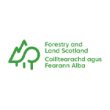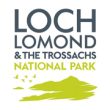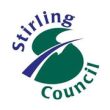Summary
The Strathard project aimed to improve land and water management decisions in a rural area of western Scotland, located within the Loch Lomond and Trossachs National Park. Using an ecosystems approach, the project sought to develop more sustainable and resilient management plans by recognising the interconnections between natural and human systems. Nature provided essential goods and services, from food to natural flood management, and the project worked to enhance these benefits through improved land use.
Research Objectives
- Foster strong working relationships and dialogue with local communities, agencies, landowners, businesses, and visitors to identify and trial land and natural flood management solutions.
- Conduct a standardised, transferable assessment of ecosystem services using international frameworks such as CICES and EUNIS.
- Collect data on provisioning, regulating, and cultural ecosystem services through a broad and focused multi-stranded assessment.
- Analyse service provision and ecosystem condition to understand how ecosystem health affected service delivery.
- Carry out hydrology assessments to evaluate water quality and flow, particularly in relation to flooding.
- Integrate ecosystem service assessments with hydrological studies to identify suitable locations for Natural Flood Management (NFM) interventions.
- Provide guidance for future land and water management, including forest design plans that considered ecosystem service provision.
Findings and Recommendations
- Online surveys were developed for both local residents and visitors to gather insights into ecosystem values.
- Community engagement events, including a launch event in Kinlochard Village Hall, helped identify local priorities.
- A film featuring community members was produced and shared via YouTube.
- Social media channels, including Twitter, were used to share updates.
- Interactive tools such as MapMe and printed surveys captured spatial and qualitative data.
- In-depth interviews and guided forest tours provided further insights into local perspectives.
- Ecosystem services were mapped using EUNIS classification and expert modelling.
- Ecosystem condition assessments used spatial indicators to prioritise habitat restoration.
- Hydrological modelling identified suitable sites for NFM, including a potential demonstration site in the Duchray catchment.
- Opportunity maps were created to guide actions such as invasive species control, habitat restoration, and woodland planting.
Latest Update
The project completed its first phase with the development of opportunity maps and identification of priority sites for intervention. Forest Research’s Huw Thomas continues to work with the Cowal and Trossachs Forest District to help lead a natural flood management strategy and monitoring programme, including a demonstration leaky woody dam in the Duchray catchment.
Funding & Partners
This project is co-funded by Scottish Environmental Protection Agency (SEPA), Forest Enterprise Scotland, Loch Lomond and the Trossachs National Park Authority (LLTNPA), NatureScot (NS), with support from partnership agencies Stirling Council and the Community Partnership.
SEPA initiated this project following a request from the Scottish Government’s Rural Affairs, Food and the Environment (RAFE) Delivery Board to improve joint working between public bodies. The Duchray catchment in Strathard was identified as a suitable trial location for developing a strategic level ecosystems service assessment to support sustainable decision-making in land use and water management.





